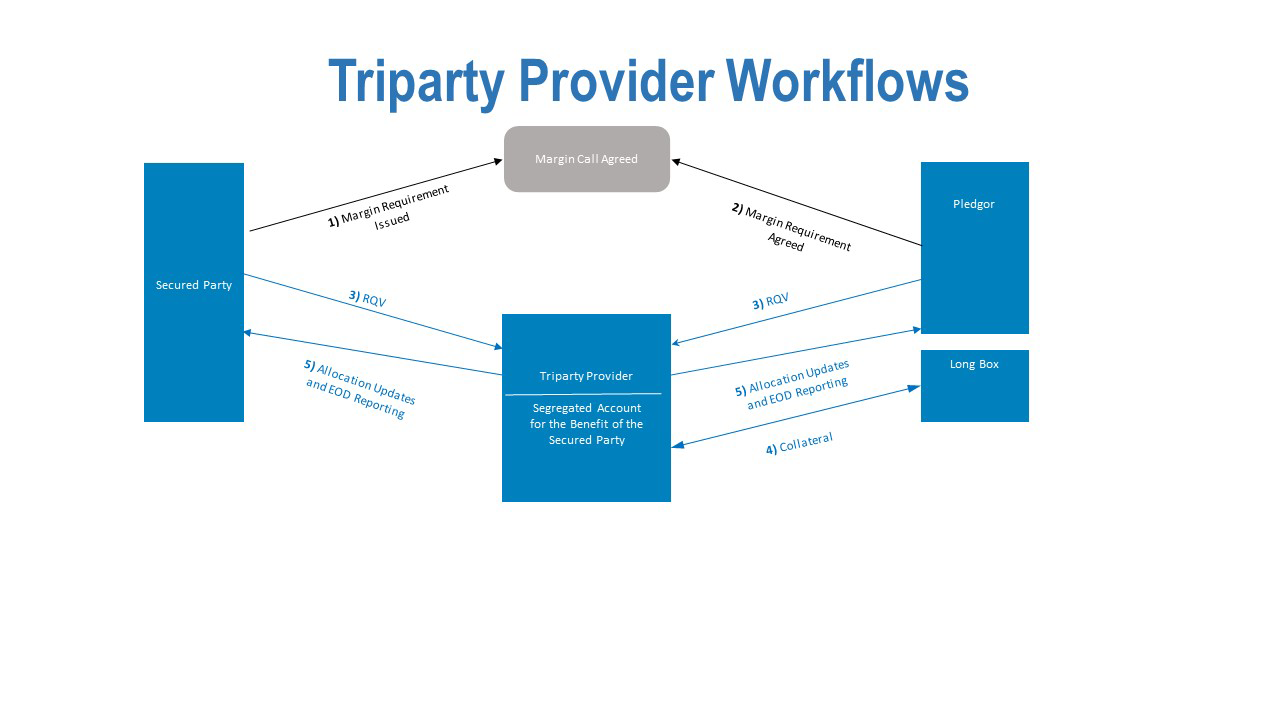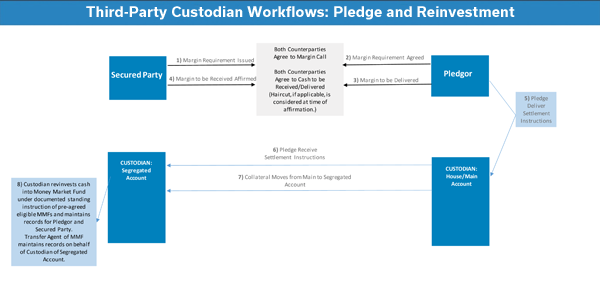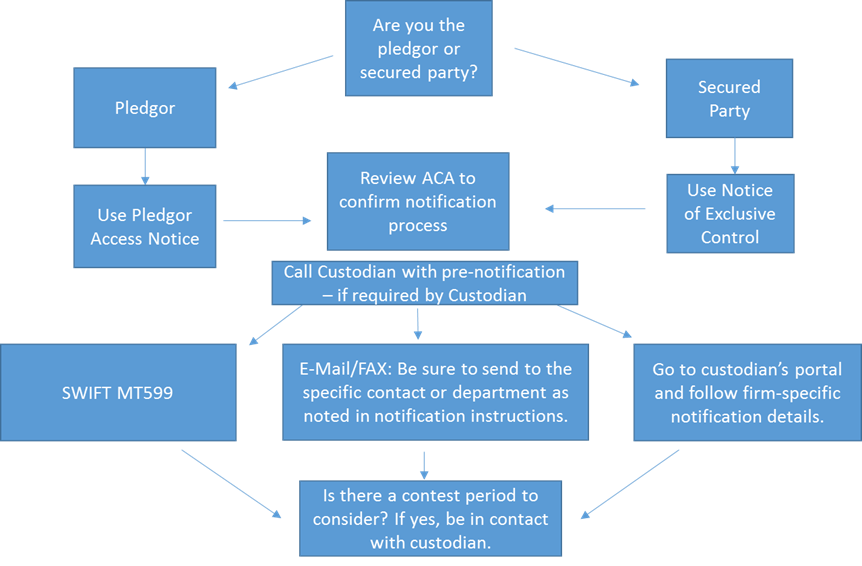Overview
Previous sections have focused on reconciliations related to collateralized trades. This section focuses on regulatory reconciliation for counterparties subject to these reconciliations. Regulatory reconciliation requirements apply for both collateralized and non-collateralized trades.
Some counterparties have compliance obligations related to regulatory portfolio reconciliations. For instance, in the US, all CFTC registered swap dealers are required to perform portfolio reconciliation with all their counterparties on a regular basis (frequency is dependent on the type of counterparty and the portfolio size). While most US based buy-sides do not have a similar direct compliance obligation, they may find that if they do not agree to perform reconciliation, dealers will not trade with them. Similarly for MAS all (OTC Derivatives Intermediaries), APRA (Covered Entities), HKSFC (Licensed Corporation) are required to perform portfolio reconciliation with all their counterparties on a regular basis. However, in the EMIR and HKMA rules, most financial counterparties do have a direct regulatory obligation to reconcile their portfolios. Thus, all counterparties should be cognizant of their own regulatory obligations as well as their counterparties.
Regulatory requirements regarding the timing to resolve breaks is specified, typically based on the principal counterparty type and the type of counterparty being faced.
As an example: In the Singapore rules MAS (SAF04-G09) Portfolio Reconciliation 6.2 it states “An OTCD Intermediary should determine the scope and frequency of portfolio reconciliation with a counterparty, taking into account the risk exposure profile, size, volatility and number of non-centrally cleared over-the-counter derivatives transactions which the OTCD Intermediary has with that counterparty”. The rules then continue to go on to state specific frequencies based on portfolio size.
Frequency of reconciliations is dependent on this along with the size of the portfolios between the counterparties.
A summary of the CFTC, EMIR and SEC Regulatory Portfolio Reconciliation Requirements is located in Appendix I.
A summary of the HKMA, HKSFC, MAS and APRA Regulatory Portfolio Reconciliation Requirements is located in Appendix 2
Therefore, you must monitor portfolio size to ensure reconciliation is at the right frequency. Firms who are following established suggested operational practices for collateral reconciliations, such as reconciling daily and include their non-collateralized trades, will automatically be compliant with the required strictest reconciliation frequency.
Regulatory requirements related to trade level valuation differences are generally identified using the VM reconciliation assuming that non-collateralized trades between the counterparties are also reconciled as separate portfolios, if applicable.
Regulatory reconciliations have many of the same requirements in terms of issue identification and process as collateral-based reconciliations. Sections 5, 6 and 7 of this document, apply generally to regulatory reconciliations as well. The principles of each section can be applied to forming regulatory reconciliation procedures, but tolerance levels should reflect regulatory requirements in terms of valuation differences and/or disputes that need to be reported. (Please refer to Section 10 ‘Regulatory Disputes Reporting’). Procedures should also address resolution time frames required for various types that apply per counterparty type.
8.1 File Formats and Recommended Inclusion of Reconcilable data Fields
Under Regulatory portfolio reconciliation obligations, for reconcilable fields each of the regulatory rules sets out its own mandatory and optional data matching requirements. For example, in EU regulations, Article 13 of RTS on OTC derivatives, states that such terms shall include the valuation attributed to each contract and should also include other relevant details to identify each particular OTC derivative contract, such as the effective date, the scheduled maturity date, any payment or settlement dates, the notional value of the contract and currency of the transaction, the underlying instrument, the position of the counterparties, the business day convention and any relevant fixed or floating rates of the OTC derivative contract.”
The “valuation attributed to each contract” as referenced in bold above can be split into 3 components. It is considered these to be the key terms that should be used at a minimum to identify breaks:
- MTM valuation
- Legal Entity Name (leading to MTM valuation break)
- Unmatched Trades details (leading to MTM valuation break)
In the HKMA, HKSFC, MAS and APRA Regulatory Portfolio Reconciliation Requirements state that the ‘material terms and valuations’ are reconciled.
The following covers the key material terms required for regulatory reconciliations for SEC and CFTC:
SEC 240.15Fi-1(l) states that “The term portfolio reconciliation means any process by which the counterparties to one or more security-based swaps:
(1) Exchange the material terms of all security-based swaps in the security-based swap portfolio between the counterparties;
(2) Exchange each counterparty's valuation of each security-based swap in the security-based swap portfolio between the counterparties as of the close of business on the immediately preceding business day; and
(3) Resolve any discrepancy in valuations or material terms.”
CFTC 17 CFTC 23.500 specifies that:
(i) Portfolio reconciliation means any process by which the two counterparties to one or more swaps:
(1) Exchange the material terms of all swaps in the swap portfolio between the counterparties.
(2) Exchange each counterparty's valuation of each swap in the swap portfolio between the counterparties as of the close of business on the immediately preceding business day; and
(3) Resolve any discrepancy in material terms and valuations.
…and that (g) Material terms means the minimum primary economic terms as defined in appendix 1 of subpart I of part 23 of this chapter.
However, it is suggested that counterparties share a wider range of contract details for reconciliation to enable effective pairing of trades for field comparisons.
8.2 ISDA Protocols, Amendment Agreements and Adherence
ISDA has developed and published several Protocols pertaining to regulatory portfolio reconciliation, dispute resolution, and disclosures to expedite documentation updates and communication with and among counterparties. ISDA Protocols allow for both counterparties to efficiently communicate with one another and amend previously executed documents or to put new documents in place.
The Protocols address many issues, and they allow counterparties to agree certain elections regarding portfolio reconciliation with each other, as an example:
EMIR Protocols allow counterparties to efficiently comply with the (Sender or Receiver) obligation and establish counterparty classification. If a firm is adhering as a ‘Sender’ and the other counterparty also adheres as a ‘Sender’, then typically an exchange of data takes place and both counterparties are obligated to undertake portfolio reconciliation independently. ‘Receiver’ status can be elected, and data will be sent from the counterparty to be reviewed, and any discrepancy found must be communicated to the ‘Receiver’ counterparty within 5 days, otherwise the data will be deemed affirmed.
Under ISDA Protocols, there is a mechanism provided for a change of its status from ‘Receiver’ to ‘Sender’ or vice versa, but this is available only by bilateral written agreement between the counterparties (consent not to be unreasonably withheld or delayed). This may require counterparties to change the platform/vendor of choice as the portfolio reconciliation process evolves.
Each counterparty should carefully review the Protocols in the context of applicable regulations between them and their counterparties to determine what information is required and applicable.as elections. The Protocols can be accessed via the ISDA website and are listed here:
The ISDA 2013 EMIR NFC REPRESENTATION PROTOCOL
ISDA 2013 EMIR Portfolio Reconciliation, Dispute Resolution and Disclosure Protocol
ISDA March 2013 Supplemental D-F Protocol
ISDA 2020 UK EMIR Portfolio Reconciliation, Dispute Resolution and Disclosure Protocol
ISDA 2021 SBS Protocol
ISDA 2021 SBS Top Up Protocol
Each of the ISDA Protocols has a related FAQ on the ISDA website that covers common questions and advice such as:
- What the protocol does and how to adhere to it.
- When in some circumstances counterparties may wish to change information within the protocol, for examples amending Portfolio Data Sending Entity and Portfolio Data Receiving Entity status in the future.
- How to become a Sending Entity in respect of some of my counterparties and a Receiving Entity in respect of others.
- How to understand change of status with multiple counterparties.
- Whether or not counterparties must execute portfolio reconciliation terms for the applicable jurisdiction (US domiciled counterparties who are not CFTC registered swap dealers do not technically have to execute schedule 4 covering portfolio reconciliation).
If required, please access the FAQ section within each of the respective protocol areas of the ISDA website using the links provided throughout this section.
For the HKMA, HKSFC, MAS and APRA regions, Amendment Agreements were developed by working groups of ISDA member institutions for implementation of the risk mitigation standards set out in the respective rules for margining and risk mitigation for non-centrally cleared derivatives. The agreements enable parties to bilaterally agree terms to reflect the portfolio reconciliation and dispute resolution requirements imposed by the individual rules. The Amendment Agreements can be accessed via the ISDA website and are listed here:
Amendment Agreement relating to HKMA Risk Mitigation
Amendment Agreement relating to Hong Kong SFC Risk Mitigation Requirements
Amendment Agreement relating to Singapore MAS Risk Mitigation Requirements
Agreement and FAQs relating to APRA Risk Mitigation Standards
8.3 CFTC, SEC and HKMA 10% Valuation Dispute Differences: Operational Approaches
Within the CFTC and SEC Portfolio Reconciliation 17 CFR § 23.502[1], and 17 CFR 240.15Fi-3[2], valuation discrepancies that are identified as part of the portfolio reconciliation process by US registered Swap Dealers (“SD”) or Major Swap Participants (“MSP”) and Security-Based Swap Dealers (“SBSD”) or Major Security-Based Swap Participants (“MSBSP”) must be resolved.
A difference between the lower valuation and the higher valuation of greater than 10 percent of the higher valuation are considered to be discrepancies. There is no absolute value threshold to this requirement, and therefore, every such valuation discrepancy of 10 percent or more must be treated as a dispute, even if the dollar value may seem immaterial. This can result in very high volumes, and as most of the discrepancies are due to counterparties’ FX snap times not aligning with one another. According to ISDA members, in these cases, those specific discrepancies usually resolve themselves within 2-4 days.
Firms that face non-US SDs, SBSDs, MSPs, and MSBSPs may be faced with unanswered requests for information because their regulatory requirements are not as prescriptive. In those cases, the US SDs, SBSDs MSPs, MSBSPs must still track the discrepancies and attempt to resolve any such differences.
Firms that face other US SDs, SBSDs MSPs, MSBSPs along with other types of counterparties not covered by reconciliation and dispute management regulation should use automation to track issues and prioritize those that could cause the greatest counterparty risk. Examples include:
- Tagging each discrepancy with a date
- Identifying root causes of discrepancies
- Creation of messages to counterparties with issue to be researched and resolved
- Streamline reporting for internal and regulatory purposes
Within the HKMA CR-G-14 (section 4.4) In relation to portfolio reconciliation Authorized Institutions (AI) must include material terms for all transactions ‘In case of a discrepancy in valuation, a difference between the lower valuation and the higher valuation of more than 10 percent of the higher valuation needs to be reconciled.’
As an additional note, the HKMA rules also say “The valuation reconciliation threshold of 10% could be applied at the netting set level. Once the 10% threshold is exceeded, all the transactions in the netting set portfolio need to be reconciled. Nevertheless, this does not preclude an AI from applying a reconciliation threshold at the transaction level which is agreed with its counterparty taking into account the risk profile of the portfolio.”
[1] 17 CFR §23.502 https://www.law.cornell.edu/cfr/text/17/23.502. Please also refer to Definitions in §23.500 as relevant.
[2] 17 CFR 240.15Fi-3 and definitions in 15Fi-1.
Back to Top








